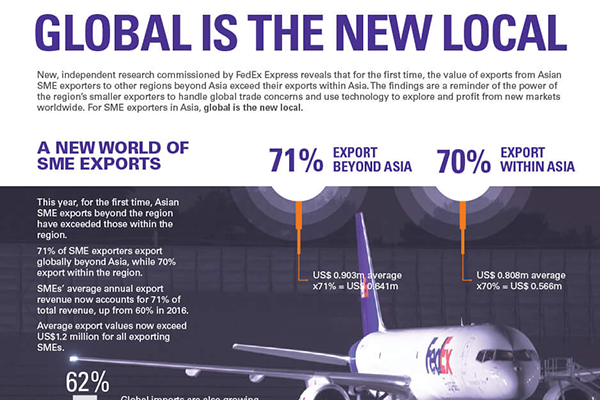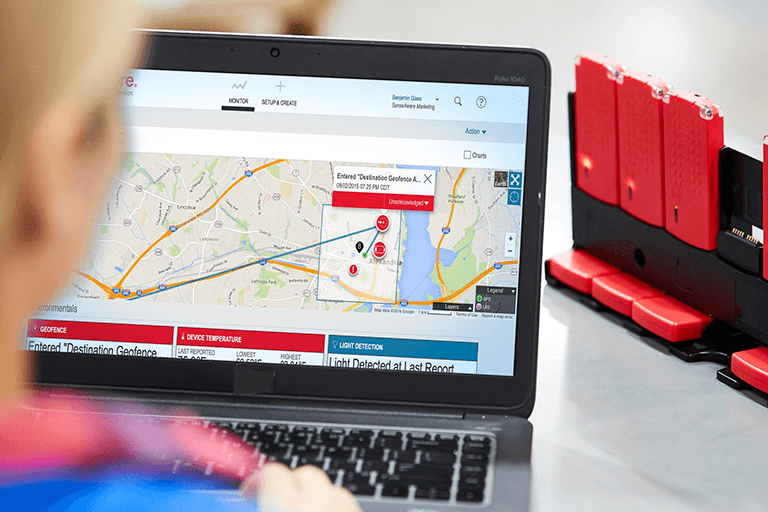How Small Businesses In Asia Harness Technology
There’s been a healthy growth pattern for Asian SMEs in recent years. Technology has been a huge help.
The role of small and medium-sized enterprises (SMEs) to Asia’s economies is continually underestimated. News reports focus on public companies and their financial results. Global giants and emerging “unicorns” grab the headlines and our imaginations. Yet SMEs account for the majority of employment across the region, providing two out of three private sector jobs and making up 96% of Asia’s businesses.
So, when SME trade trends shift, it makes an important economic difference. Throughout the COVID-19 pandemic, many SMEs have adapted to survive. Some businesses have used this opportunity to retrain their staff, upgrade internal systems or to design new products and services to accelerate recovery. The SARS outbreak between 2002 and 2004 is often credited for fast-tracking the development of China’s e-commerce. Similarly, the COVID-19 pandemic has fostered new customer needs, opening up an opportunity for SMEs to demonstrate their value through innovation, specifically within the technology sector.
Agility and diversification help shore up success
In 2020, the overall global trade is expected to decrease by between 13% and 32% due to economic disruptions caused by the COVID-19 pandemic. The healthcare crisis is paralyzing many businesses globally, with the hardest hit on retail, transportation and travel industries. While the crisis threatens many large conglomerates such as Inditex and H&M Group, it’s also presented unprecedented opportunities to SMEs.
The business outlook remains optimistic in Asia Pacific, thanks to the early measures to contain the coronavirus and thus the speedier recovery in this region. According to Xin Hua Net, over 66% of merchants on Alibaba’s leading e-commerce platforms, Taobao and Tmall, conveyed optimism about the future of their businesses in 2020. More than 90% of respondents expressed that they expect to experience losses, but nearly 90% said that they will not cut jobs in 2020 despite the financial pressure imposed by the outbreak. But why so confident?
One compelling answer is that Asian SME export markets are highly diversified, reducing dependence on any one export region or market.
The business outlook remains optimistic in Asia Pacific, thanks to the early measures to contain the coronavirus and thus the speedier recovery in this region. According to Xin Hua Net, over 66% of merchants on Alibaba’s leading e-commerce platforms, Taobao and Tmall, conveyed optimism about the future of their businesses in 2020. More than 90% of respondents expressed that they expect to experience losses, but nearly 90% said that they will not cut jobs in 2020 despite the financial pressure imposed by the outbreak. But why so confident?
One compelling answer is that Asian SME export markets are highly diversified, reducing dependence on any one export region or market.
Technology levels the playing field
Without extensive international resources and large export departments, SMEs in Asia Pacific have always been at a disadvantage in terms of global trade compared with their larger counterparts. It’s not surprising that, until now, those SMEs that do export have targeted primarily other Asia Pacific markets, where relatively short distances, common cultures and traditional connections have created paths of least resistance.
Yet the emergence of new technologies and their widespread adoption by these SMEs has undoubtedly played a significant role in making the world smaller for SME exporters, and in making international trade easier. According to the World Population Review, the three most technologically advanced countries in 2020 are Japan, India and China.
Four in five (82%) APAC SMEs are using e-commerce, which is a key driver of exporting and importing behavior. Mobile and social commerce are also widely used by Asian SMEs that export. M-commerce is now used by 72% of SMEs compared with 61% in 2016, with half (51%) of them using m-commerce to find new export revenues.
APAC SMEs are seeing the value of social commerce in a number of areas of their business, including helping them identify new customers (43%) and suppliers (38%), providing customer support (42%) and in tracking deliveries (39%).
Yet the emergence of new technologies and their widespread adoption by these SMEs has undoubtedly played a significant role in making the world smaller for SME exporters, and in making international trade easier. According to the World Population Review, the three most technologically advanced countries in 2020 are Japan, India and China.
Four in five (82%) APAC SMEs are using e-commerce, which is a key driver of exporting and importing behavior. Mobile and social commerce are also widely used by Asian SMEs that export. M-commerce is now used by 72% of SMEs compared with 61% in 2016, with half (51%) of them using m-commerce to find new export revenues.
APAC SMEs are seeing the value of social commerce in a number of areas of their business, including helping them identify new customers (43%) and suppliers (38%), providing customer support (42%) and in tracking deliveries (39%).

Trade and Industry 4.0
The impact of technology is not restricted purely to trade operations. FedEx research report also reveals APAC SMEs are increasingly adopting a number of so-called Industry 4.0 technologies that impact overall efficiency, innovation and competitiveness.
Among current users of new technologies, a significant proportion of SMEs said they are likely to increase use of mobile payments (69%), big data/advanced analytics (64%), software automation (61%) as well as artificial intelligence (60%). Almost two-thirds of APAC SMEs agree that using emerging technologies is helping to drive efficiencies in supply chain and distribution channels.
Among current users of new technologies, a significant proportion of SMEs said they are likely to increase use of mobile payments (69%), big data/advanced analytics (64%), software automation (61%) as well as artificial intelligence (60%). Almost two-thirds of APAC SMEs agree that using emerging technologies is helping to drive efficiencies in supply chain and distribution channels.
Challenges old and new
Thanks to technology, traditional challenges that APAC SMEs faced in doing business internationally, such as the lack of physical presence in export markets and language barriers, are the least of their concerns today.
E-commerce, mobile and social commerce are putting powerful communication and operational tools into the hands of the SMEs that need them most. The net result is the growth in both the global export reach and the confidence of SME exporters across Asia Pacific generally. Among millennials, the feasibility of creating your own job with the tools you naturally have to hand – a smartphone and a laptop – has begun to wipe out traditional social pressure to find a job with an existing company. Younger SMEs prefer to be entrepreneurial, and more and more are taking the leap to be their own boss.
Yet important challenges remain. Almost half (49%) of APAC SMEs worry over customs procedures, while 45% cite currency exchange issues and 43% are concerned about logistics and delivery issues. Completely seamless and borderless international trade for SMEs remains some way off. But APAC SMEs clearly have the appetite and, increasingly, the tools to take on the world.
If you’re an SME in Asia Pacific who would benefit from regular tips on logistics and the business landscape, make sure you follow our LinkedIn page here for the latest insights.
E-commerce, mobile and social commerce are putting powerful communication and operational tools into the hands of the SMEs that need them most. The net result is the growth in both the global export reach and the confidence of SME exporters across Asia Pacific generally. Among millennials, the feasibility of creating your own job with the tools you naturally have to hand – a smartphone and a laptop – has begun to wipe out traditional social pressure to find a job with an existing company. Younger SMEs prefer to be entrepreneurial, and more and more are taking the leap to be their own boss.
Yet important challenges remain. Almost half (49%) of APAC SMEs worry over customs procedures, while 45% cite currency exchange issues and 43% are concerned about logistics and delivery issues. Completely seamless and borderless international trade for SMEs remains some way off. But APAC SMEs clearly have the appetite and, increasingly, the tools to take on the world.
If you’re an SME in Asia Pacific who would benefit from regular tips on logistics and the business landscape, make sure you follow our LinkedIn page here for the latest insights.
***
* The independent study, entitled “Global is the New Local: The Changing International Trade Patterns of Small Businesses in Asia Pacific”, was conducted by Harris Interactive on behalf of FedEx Express to offer insights into import and export opportunities and challenges facing SMEs. The results are based on interviews with 4,543 senior executives of SMEs held online and by telephone in Mainland China, Hong Kong, Japan, Malaysia, Philippines, Singapore, South Korea, Taiwan and Vietnam between March and April 2018. Interviews were split equally by market with a representative mix of company sizes: micro (1-9 full-time employees), small (10-49 full-time employees) and medium (50-249 full-time employees). The sample size was approximately 500 respondents per market.



















 The Latest
The Latest